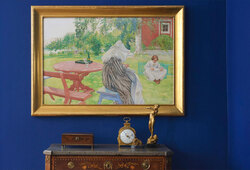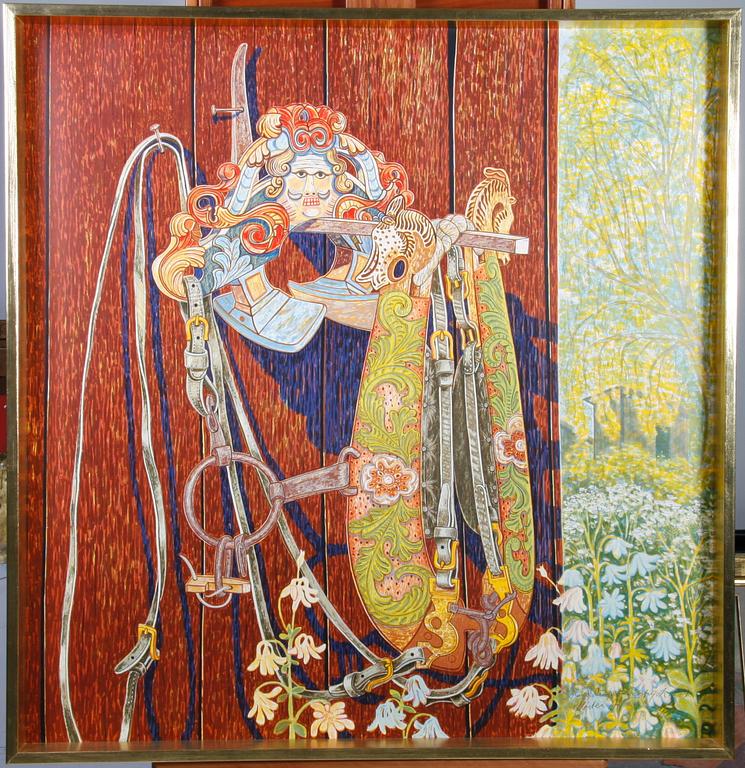Mårten Andersson
ANDERSSON, MÅRTEN. Färglitografi, sign o dat 1977. Handdraget provtryck.
Seldon. 119 x 115.
Artist
Mårten Andersson was born in 1934 in Freluga, approximately 10 kilometres from Bollnäs in Hälsningland. His father was a spirited soul and he made a living as a carpenter, painter and itinerant worker. He preferred to paint moose in marshlands with beautiful sunsets , though he cound it hard to paint moose, so his only son had to pitch in early to help. The teachers at Sörängs school realised the young painter’s potential and saw to it that he attended a painting course with Bollnäs artists Per Englund and Fritiof Strandberg.
Upon turning eighteen, Andersson moved to Stockholm and started his studying decorative arts at Konstfack, where he remained for two years. During the summers Andersson worked with Jerk Werkmäster in Rättvik, a crucial influence who showed him the way to becoming a serious painter. After finishing school, Andersson and his friend Lennart Jirlow travelled to Italy and enrolled in the Free Academy in Florence. In Tuscany Andersson discovered the entire history of Western art and realized that the provincialism of Hälsingland and the legacy of folk painters like Lim-Johan and Haaken Gulleson were Sweden's answer to Italian masters like Botticelli and Donatello, among others.
Italy became a defining experience for Mårten Andersson, who returned to Freluga in Hälsingland and found that his subject matter blended seamlessly with his newfound Italian heritage. Each painting Mårten Andersson creates tells its own unique story; he plays with various interpretations and perspectives that leave the viewer somewhat perplexed and uncertain.






























